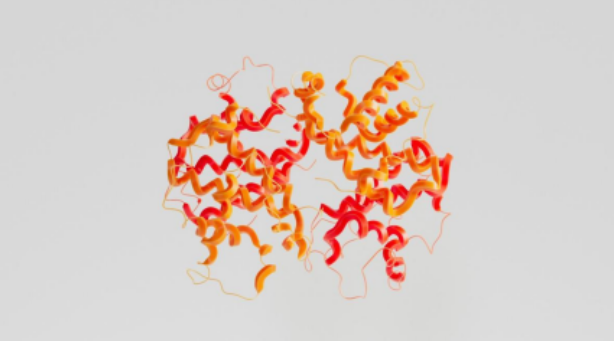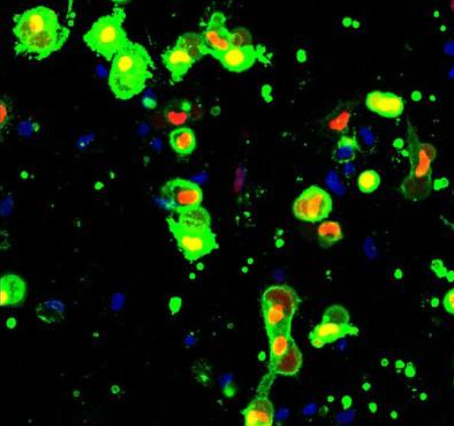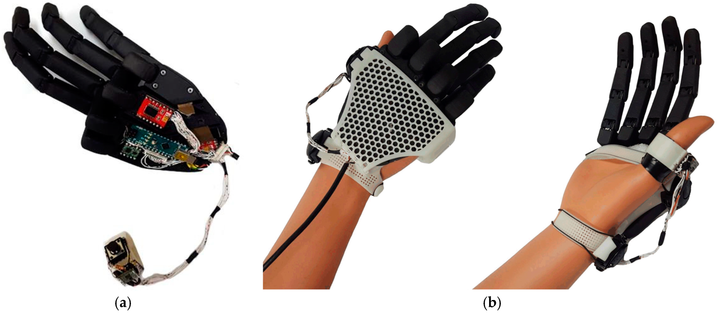How has the human brain evolved over time? There are several key players in the origin of human intelligence, both biological and anthropological. In this introduction, we explore some of the genetic drivers of human brain evolution and their pivotal role in shaping our higher cognitive abilities. By Madeleine Hjelt
Chess players are said to burn up to 6,000 calories per day during a tournament (Kumar, 2019). While this figure is debated, it highlights the extraordinary energy demands of high level cognitive processes in humans, which, despite being only 2% of our body weight, consumes 20% of the body’s energy. This value is far greater than our primate ancestors, meaning that evolutionary investment in human brain development likely contributed to giving us our superior intellect. While anthropologists have mainly studied the cultural and psychological changes behind this transformation, there is a lot more to discover about the genetic underpinnings of cognition. Genes regulating neurogenesis and neuronal maturation in humans are thought to play a pivotal role in our cognitive edge over other primates. Without such genes, we could not have conjured up the idea of chess, let alone analyse the 1040 possible chess moves, whilst burning enough calories to feed two fully grown men for a day.
Human brains are larger than those of primates, but also have an expanded neocortex, increased synaptic spine density and slower (i.e. ‘bradychronic’) neurodevelopment. These are features hypothesised to result from human-specific gene duplications (HSGDs) and other modifications (Lindhout et al., 2024). For example, human-specific ARHGAP11B arose from a partial duplication of ARHGAP11A ≈ 5mya after humans diverged from chimpanzees, aiding metabolic changes important for basal progenitor divisions in the cortex, leading to increased basal radial glia (BRG) proliferation in its upper layers (Florio et al., 2015). BRGs are a specialised type of radial glial cell located in the outer subventricular zone of the neocortex - a region crucial for higher cognition and consciousness. This layer is more pronounced in humans compared to primates, reflecting its pivotal role in our advanced brain capabilities.
Figure 1: A diagram illustrating neural progenitor cell types in the human neocortex. VZ, Ventricular zone; SVZ, subventricular zone; IZ, Intermediate zone; CP, Cortical Plate. bRG and aRG: basal and apical radial glia, respectively. bIP and aIP: basal and apical intermediate progenitors, respectively. Nb and N: neurons with and without basal surface contact, respectively. The key shows each neural progenitor cell type including amplifying interactions between them. Adapted from Florio et al. (2015).
CROCCP2 is another human-specific gene duplicate of the CROCC gene (ciliary rootlet coiled-coil). Highly expressed in the human fetal brain, it reduces ciliary activity, triggering increased mTOR signalling and promoting basal progenitor proliferation in the cortex during development (Van Heurck et al., 2023). In mouse models, gain-of-function experiments for CROCCP2 and ARHGAP11B both amplify cortical progenitors, with ARHGAP11B additionally driving cortical folding (gyrification) and enhanced cognitive abilities (Fischer et al., 2022).
Unfortunately, the cost of our higher cognitive abilities and expanded cortices is the time it takes to develop them. The term ‘bradychrony’, which I mentioned earlier, describes a slower pace of neurodevelopment seen in humans, compared to other mammals, who experience ‘tachychronic’ or accelerated rates of development (Lindhout et al., 2024).
Several genes contribute to bradychronic neurodevelopment in humans. One notable example is ZEB2, a transcription factor involved in the neuroepithelial-to-radial glial cell transition during neocortex development. ZEB2 delays the timing of this transition relative to apes, expanding the neuroepithelial (NE) precursor pool in the cortex, leading to increased cortical neurogenesis and expansion of the cerebral ventricles (Benito-Kwiecinski et al., 2021). Interestingly, it is not human-specific - it is found in primates, yet its loss of function in humans clearly depicts brain developmental defects, such as in patients with Mowat-Wilson syndrome. Therefore, delayed neuronal maturation may be due to ZEB2 expression timing, levels and localisation, and not the identity of the neuronal progenitors themselves.
Another gene influencing delayed brain development is SRGAP2C, a human-specific partial duplication of its ancestral copy SRGAP2A. SRGAP2A translates an insoluble protein which promotes the maturation of excitatory and inhibitory synapses formed by cortical pyramidal neurons, whilst also limiting synaptic density. SRGAP2C protein acts as a proteasome and inhibits these functions by directly binding to the SRGAP2A protein formed, thus prolonging synapse maturation and increasing neural connectivity in the human cortex (Schmidt et al., 2019). Together, these genes highlight how shifts in developmental timing of neurons and their synapses contribute to the unique features of the human brain.
These genes represent just a fraction of the genetic drivers of human brain evolution. Increased cortical neurogenesis and bradychronic neurodevelopment were two principal contributors, largely due to ancestral gene duplications, however, many other genetic modifications aided this cognitive shift. For instance, NOTCH2NL, which supported brain enlargement during the emergence of humans, arose through a gene conversion; when a non-functional gene is repaired. The defective version persists in gorillas and chimpanzees today (Fiddes et al., 2018). These genes emphasise the importance of stochastic mutations and their importance in adaptive evolution, driving the lineage split of humans from primates. Future research may not only clarify the origins of human intelligence but also offer insights into neurological disorders and brain development.
References
Cover Image:
https://www.pexels.com/photo/chessboard-on-green-surface-57018/
https://unsplash.com/photos/matrix-movie-still-iar-afB0QQw
- Benito-Kwiecinski, S., Giandomenico, S.L., Sutcliffe, M., Riis, E.S., Freire-Pritchett, P., Kelava, I., Wunderlich, S., Martin, U., Wray, G.A., McDole, K. & Lancaster, M.A., 2021. An early cell shape transition drives evolutionary expansion of the human forebrain. Cell, 184(8), pp.2084-2102.e19. Available at: https://doi.org/10.1016/j.cell.2021.02.050.
- Fiddes, I.T., Lodewijk, G.A., Mooring, M., Bosworth, C.M., Ewing, A.D., Mantalas, G.L., Novak, A.M., van den Bout, A., Bishara, A., Rosenkrantz, J.L., Lorig-Roach, R., Field, A.R., Haeussler, M., Russo, L., Bhaduri, A., Nowakowski, T.J., Pollen, A.A., Dougherty, M.L., Nuttle, X., et al., 2018. Human-specific NOTCH2NL genes affect Notch signaling and cortical neurogenesis. Cell, 173(6), pp.1356–1369.e22. Available at: https://doi.org/10.1016/j.cell.2018.03.051.
- Fischer, J., Fernández Ortuño, E., Marsoner, F., Artioli, A., Peters, J., Namba, T., Eugster Oegema, C., Huttner, W.B., Ladewig, J. & Heide, M., 2022. Human-specific ARHGAP11B ensures human-like basal progenitor levels in hominid cerebral organoids. EMBO Reports, 23(e54728). Available at: https://doi.org/10.15252/embr.202254728.
- Florio, M., Albert, M., Taverna, E., Namba, T., Brandl, H., Lewitus, E., Haffner, C., Sykes, A., Wong, F.K., Peters, J., Guhr, E., Klemroth, S., Prüfer, K., Kelso, J., Naumann, R., Nüsslein, I., Dahl, A., Lachmann, R., Pääbo, S. & Huttner, W.B., 2015. Human-specific gene ARHGAP11B promotes basal progenitor amplification and neocortex expansion. Science, 347(6229), pp.1465-1470. Available at: https://doi.org/10.1126/science.aaa1975.
- Kumar, A., 2019. The Grandmaster Diet: How to Lose Weight While Barely Moving. ESPN. Available at: https://www.espn.co.uk/espn/story/_/id/27593253/why-grandmasters-magnus-carlsen-fabiano-caruana-lose-weight-playing-chess.
- Lindhout, F.W., Krienen, F.M., Pollard, K.S., et al., 2024. A molecular and cellular perspective on human brain evolution and tempo. Nature, 630, pp.596–608. Available at: https://doi.org/10.1038/s41586-024-07521-x.
- Schmidt, E.R.E., Kupferman, J.V., Stackmann, M., et al., 2019. The human-specific paralogs SRGAP2B and SRGAP2C differentially modulate SRGAP2A-dependent synaptic development. Scientific Reports, 9, p.18692. Available at: https://doi.org/10.1038/s41598-019-54887-4.
- Van Heurck, R., Bonnefont, J., Wojno, M., Suzuki, I.K., Velez-Bravo, F.D., Erkol, E., Nguyen, D.T., Herpoel, A., Bilheu, A., Beckers, S., Ledent, C. & Vanderhaeghen, P., 2023. CROCCP2 acts as a human-specific modifier of cilia dynamics and mTOR signaling to promote expansion of cortical progenitors. Neuron, 111(1), pp.65-80.e6. Available at: https://doi.org/10.1016/j.neuron.2022.10.018.





